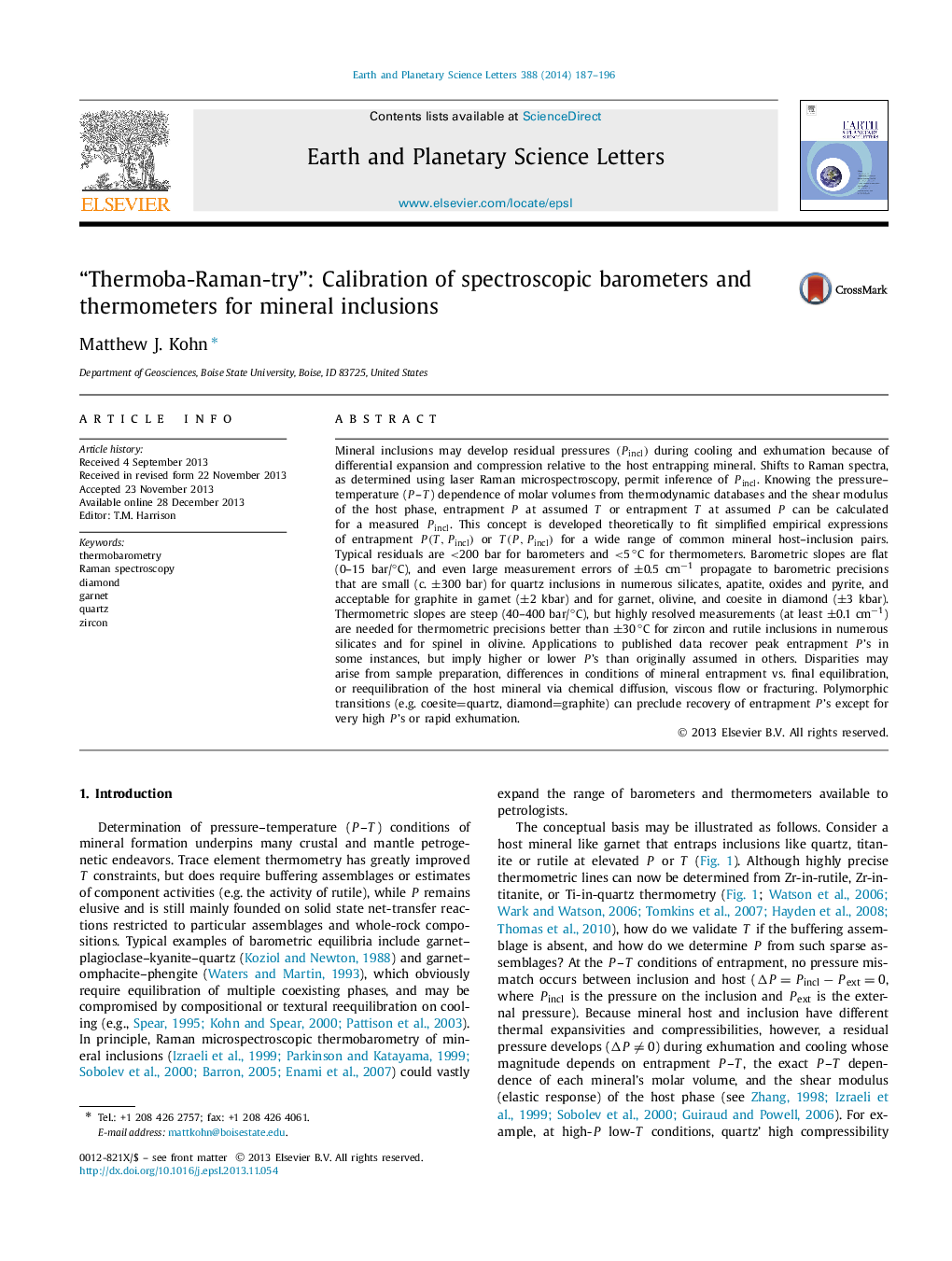| Article ID | Journal | Published Year | Pages | File Type |
|---|---|---|---|---|
| 6429773 | Earth and Planetary Science Letters | 2014 | 10 Pages |
â¢Thermobarometers are calibrated for numerous host-inclusion mineral pairs.â¢Isopleths of Raman spectroscopic shifts in inclusions are P-T-sensitive.â¢Quartz in many silicates and oxides is barometrically promising for crustal rocks.â¢Zircon in silicates is thermometrically promising.â¢Thermoba-Raman-try of coesite in UHP rocks will rarely succeed.
Mineral inclusions may develop residual pressures (Pincl) during cooling and exhumation because of differential expansion and compression relative to the host entrapping mineral. Shifts to Raman spectra, as determined using laser Raman microspectroscopy, permit inference of Pincl. Knowing the pressure-temperature (P-T) dependence of molar volumes from thermodynamic databases and the shear modulus of the host phase, entrapment P at assumed T or entrapment T at assumed P can be calculated for a measured Pincl. This concept is developed theoretically to fit simplified empirical expressions of entrapment P(T,Pincl) or T(P,Pincl) for a wide range of common mineral host-inclusion pairs. Typical residuals are <200 bar for barometers and <5â°C for thermometers. Barometric slopes are flat (0-15 bar/°C), and even large measurement errors of ±0.5 cmâ1 propagate to barometric precisions that are small (c. ±300 bar) for quartz inclusions in numerous silicates, apatite, oxides and pyrite, and acceptable for graphite in garnet (±2 kbar) and for garnet, olivine, and coesite in diamond (±3 kbar). Thermometric slopes are steep (40-400 bar/°C), but highly resolved measurements (at least ±0.1 cmâ1) are needed for thermometric precisions better than ±30â°C for zircon and rutile inclusions in numerous silicates and for spinel in olivine. Applications to published data recover peak entrapment Pʼs in some instances, but imply higher or lower Pʼs than originally assumed in others. Disparities may arise from sample preparation, differences in conditions of mineral entrapment vs. final equilibration, or reequilibration of the host mineral via chemical diffusion, viscous flow or fracturing. Polymorphic transitions (e.g. coesitequartz, diamondgraphite) can preclude recovery of entrapment Pʼs except for very high Pʼs or rapid exhumation.
Graphical abstractDownload high-res image (180KB)Download full-size image
